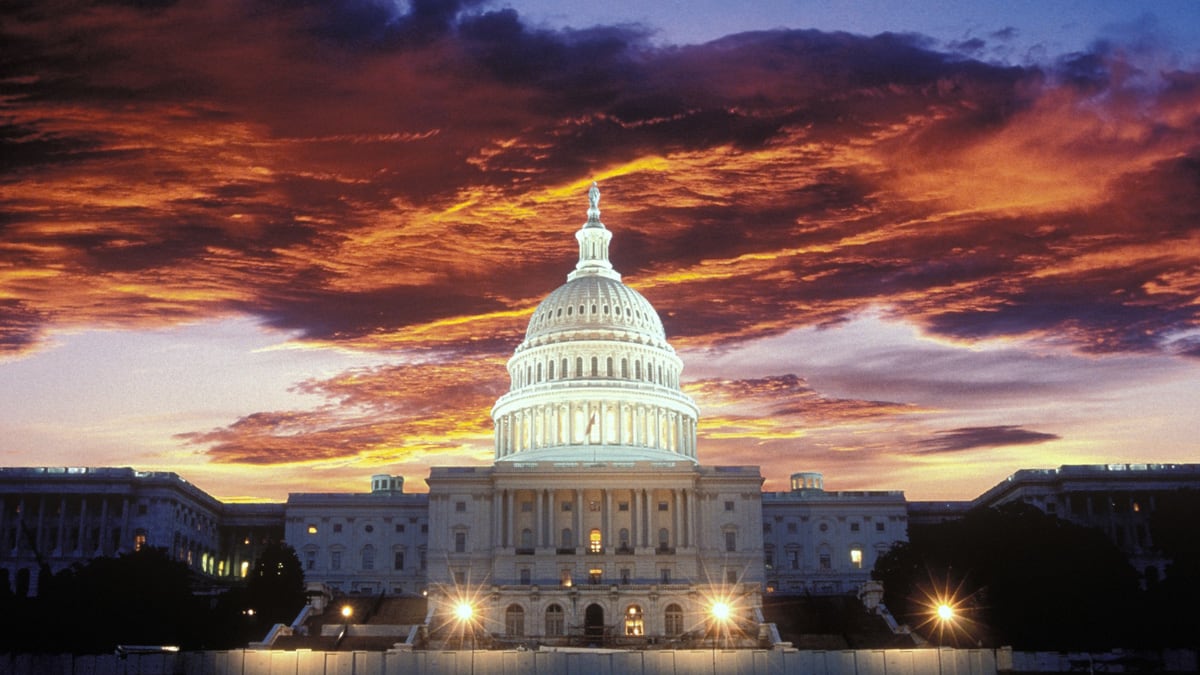From the blogosphere to The New York Times, dire perceptions have dominated the news in recent days. “Washington: Is the Political System Broken?” asked The Week’s headline on a roundup of depressing stories.
“It’s hard to remember a more dismal moment in American politics,” said Jacob Weisberg in Slate.com, adding that “compromise is dead” and our political system “is broken in every possible way.”
Alarmist commentary escalated over the weekend when Texas Gov. Rick Perry entered the Republican presidential campaign and was instantly anointed the probable frontrunner. Pundits immediately predicted that an Obama-Perry race would be the biggest battle yet in the culture war—“a war between the two Americas, each side represented by its respective cultural standard-bearer, each side’s foot soldiers absolutely smoldering with contempt for everything the other guy stands for and indeed the way he looks. We’ve never quite had that before, not in this way,” said Michael Tomasky in The Daily Beast.
But according to political historians, such observations are correct only if memories are short. And since historians take a much longer view, their take on the current political warfare is different indeed.
“The argument that partisanship is worse today than ever before falls flat on its face if you look back historically,” says William F. Connelly Jr., the author of James Madison Rules America: The Constitutional Origins of Congressional Partisanship. “When the American republic was just getting off the ground, the language between the two political parties was at least as shrill as it is today, and we survived. The historian Joseph Ellis said the 1790s were a decadelong shouting match; you had a whole series of the founders we now revere as statesmen pitted against one another.”
The accusations now being hurled back and forth are no more acrimonious than those generated during America’s birthing pains, according to Connelly, the John K. Boardman professor of politics at Washington & Lee University.
“Vituperative language and over-the-top criticism of opponents are not new to our politics, nor is the idea that one side or the other isn’t altogether patriotic,” Connelly reports. “In the 1790s, the Hamiltonians called the Jeffersonians ‘Jacobins,’ which is roughly equivalent to calling someone a communist 30 years ago, back when communism was still a bogeyman. And on the other side, the Jeffersonians referred to the Hamiltonians as ‘monarchists,’ which I suppose would be the equivalent of calling them fascists in the modern era. Both sides were convinced that what the other side was proposing was unconstitutional.”

The Founding Fathers were also subjected to the kind of scandal-mongering endemic to today’s 24/7 cyber-news cycle. “The yellow press engaged in the most scurrilous charges, especially against Jefferson and Hamilton, the two rising stars of the time,” Connelly says, citing gossip about Thomas Jefferson’s longtime romantic relationship with his slave Sally Hemings and Alexander Hamilton’s adulterous affair with Maria Reynolds.
Over time, such political divisiveness tends to wax and wane. During the early 1800s, when relative peace prevailed, “you had the so-called ‘era of good feelings,’” Connelly notes. “But those periods of partisan quiescence are the exception. The rule is partisan conflict, and pretty shrill partisan conflict. Our constitutional system can handle it; you have confrontation intentionally built into it. The system invites divided government, and we’ve survived two-plus centuries of this.”
Although recent weeks have featured much hand-wringing over the tendency of such conflict to produce legislative gridlock, as during the debt ceiling crisis, even such stand-offs can ultimately be productive, according to David Mayhew, the Sterling professor of political science at Yale University.
“If you ask whether the economy is managed worse under unified party control or under divided party conditions, no, it’s not managed worse under divided party control,” says Mayhew, the author of Divided We Govern. “It’s true that under divided control we can get confrontations that are unpopular; the public doesn’t like messy conflict down there. But do you get worse policies? Generally, no, you don’t. Over a long period of time, an awful lot of legislating is done across party lines. They come to compromises, and life goes on. It has ever been thus.”
Moreover, the public may be unfair in holding elected representatives responsible for such acrimony, historians say. “Approval ratings of Congress are even lower right now than they usually are, but the problem with blaming it on the institution is that there is deep disagreement in the public itself about what our economic policy should be, so in that sense it’s the public’s fault,” says Mayhew, who is also the author of Electoral Realignments and America’s Congress. “The problem is a diverse electorate with a lot of disagreement. What can we do—fire the electorate? If public opinion is divided and conflicted, those divisions and conflicts will carry over into our politics. And it’s the American way to say the system is broken when you don’t get what you want. This goes back to 1799; it’s always the first recourse.”
Such division often produces what Connelly calls “a cacophonous and competitive politics, but it has also produced a fairly free and wealthy society, so I’m quite sanguine about our ability to survive the latest travails,” he says. “The pants-on-fire analysis is a form of hysteria. The system is not broken; the system can withstand confrontational politics. For months leading up to the debt-limit crisis, I kept saying, don’t worry. Congress is kind of like college students. They put everything off until the last minute, and they finally settle.”






